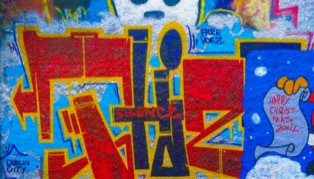PHOTO GALLERY
U2 GRAFFITI WALL DECEMBER 2014
THE U2 WALL AS IT WAS AT THE END OF 2014 [WINDMILL LANE]
The U2 Wall at Windmill Lane: A Story of Music, Graffiti, and Memory
Windmill Lane Recording Studios, established in 1978, became a legendary hub for Irish music, most notably associated with U2. The studio's exterior wall, facing Windmill Lane, transformed into a vibrant canvas for fan expression, becoming known as the "U2 Wall". Fans from around the globe flocked to this site, leaving messages, lyrics, artwork, and declarations of love for the band. The wall became a unique, ever-evolving monument to U2's global impact and a tangible connection point for their fans. Publications like The New York Times even recommended it as a tourist attraction.
The original studio buildings were located at 22 Windmill Lane. U2 recorded several key albums there, including Boy, October, War, The Joshua Tree, Pop, All That You Can't Leave Behind, and Zooropa, further cementing the studio's place in music history. As U2's fame grew, so did the wall's notoriety, drawing countless visitors and becoming a symbol of the band's connection with their fans.
In 2014, Hibernia REIT, a property investment company, announced plans to redevelop the Windmill Lane area. They had acquired the loans against the Hanover Building on Windmill Lane and an adjoining development site. This redevelopment inevitably meant the demolition of the original studio buildings, including the U2 Wall. The demolition commenced on 3 April 2015, and the wall itself came down in September 2015. Eyewitness accounts describe the demolition as thorough, with the walls reduced to rubble and dust.
Conflicting reports exist about the wall's fate. Some sources claim a 20-metre section was preserved. While this is plausible, given the sale of bricks for charity by the Movember Foundation and the display of a section at the Irish Rock 'n' Roll Museum Experience, the exact location and circumstances of this preservation remain unclear. It is likely that sections of the wall were carefully dismantled and stored before the main demolition, explaining how fragments could be salvaged. The idea that a 20-metre section remained in situ seems unlikely given the descriptions of the demolition.
The sale of bricks for charity a year after the demolition raises questions. While it's possible larger pieces were salvaged, the scale of the destruction suggests the "sections" sold were probably smaller fragments, perhaps incorporated into commemorative items. Whether this was a genuine effort to raise money or a PR stunt is debatable.
Despite the demolition, the legacy of the U2 Wall lives on. The sale of fragments, however small, and the display of a section in the museum ensure its memory remains. Photographs taken before the demolition document the wall's vibrant history and the evolution of fan graffiti. They serve as a reminder of the wall's significance as a canvas for fan expression and a symbol of U2's connection with their audience.
Windmill Lane Recording Studios itself relocated in 1990 to Ringsend Road, where it continues to operate today. The original Windmill Lane building, after the studio's departure, housed various post-production facilities. The site remained vacant from 2006 onwards, and plans for its redevelopment eventually led to its demolition. The U2 Wall, though physically gone, remains a significant part of Dublin's music history and a testament to the enduring power of music to connect fans with artists.













